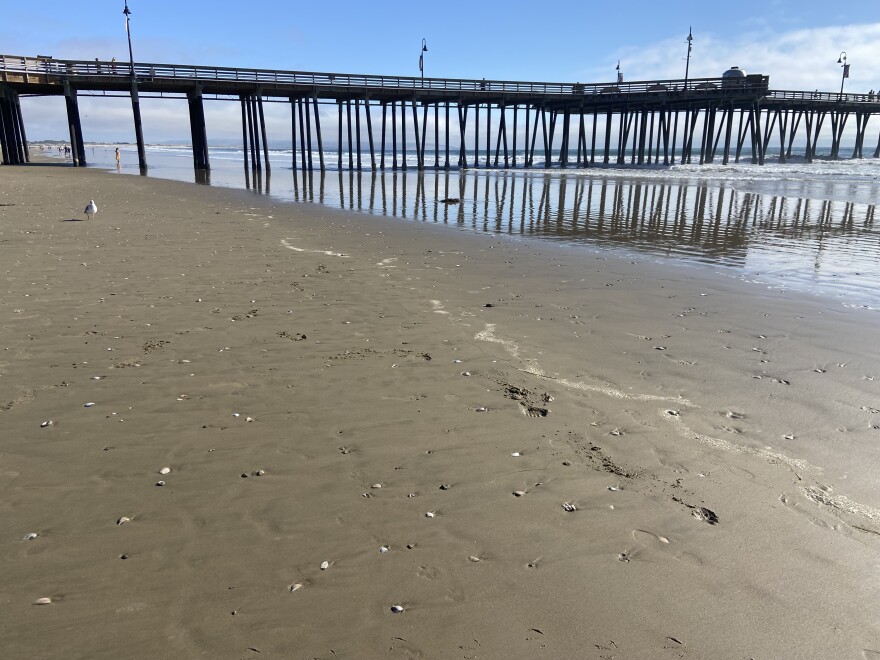Pismo Beach was dubbed the “Clam Capital of the World” in the 1940s, but the clams were nearly fished to extinction.
Now, hundreds of clams are dotting the sand, and a Cal Poly Biology professor is trying to figure out why.
Benjamin Ruttenberg is a biology professor at Cal Poly and the director for the Center for Coastal Marine Sciences. He’s leading a team of students that go out monthly to study and count the Pismo clam population.
It’s still unclear why so many are emerging, but he has some ideas; one is the algal blooms that happen at this time of year.
“Sometimes in the summer, we see blooms of certain types of algae,” Ruttenberg said. “Some of those algae produce chemicals and compounds that may make it harder for them to filter on over their gills or extract oxygen from the water.”

This may make it harder for the clams to breathe, which causes them to come up to the surface for air.
Ruttenberg said another possibility is that there was a baby clam boom recently. Most clam larvae die, but if they have enough food, the right water temperature and ocean currents guiding them to shore, they stand a better chance.
Sometimes, all these perfect conditions happen at once.
“Even though the mortality rates are normally 99.999%, just a small change in that survival can lead to a huge increase in the number of babies showing up on the beach,” Ruttenberg said.
Ruttenberg thinks we began to see this surge in 2014-15.
When it comes to encountering these clams, here’s what he suggests: If you find a clam by itself, it's a good idea to gently place it near the water with its hinge facing the ocean.
But, if you see lots of clams together, it's best to leave them alone. They know how to take care of themselves.
“We see them pop up, and then, all the sudden, they all decide at the same moment to bury themselves in the sand,” Ruttenberg said.
Ruttenberg also advises drivers on the Oceano Dunes not to drive near the waterline, as this could harm or kill the clams.
For more about Cal Poly’s research on the Pismo clams, you can visit marineconservationlab.org/pismoclams.






